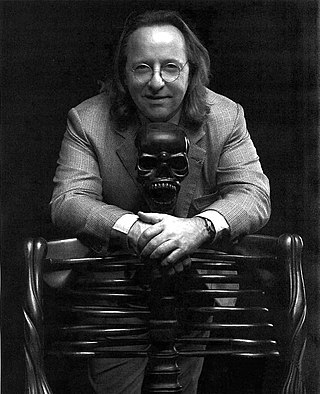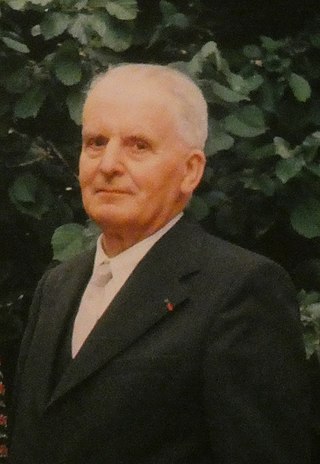
The Metz Citadel was a fort built at Metz, northeast France in the second half of the 16th century.

The Metz Citadel was a fort built at Metz, northeast France in the second half of the 16th century.

After the French defeated the Holy Roman Empire in the Siege of Metz in 1552, the city became a French protectorate as the 'Messine Republic' with a French garrison. To house it, an artillery-proof citadel was begun in 1556, only four years after the siege. Although the protectorate was still technically and legally part of the Empire, the city was now a 'de facto' French possession.
The citadel's construction was ordered by François de Scépeaux de Vieille-Ville, governor of the Three Bishoprics and involved the Italian military engineer Rocco Guerrini [1] The city's population was forced to take part in the works and supply the French troops' needs. [2] Completed around 1564, the citadel reinforced the south-west sector of the city's medieval ramparts, which had proved the hardest area to crack during the siege but could no longer be adapted to advances in artillery. Its aim was to control the city itself and its approaches, with cannon that could be turned to fire in either direction. As with the Spandau Citadel, built on the same model, it had four angled bastions surrounded by a four-sided moat - the neighbouring lac aux Cygnes was the former canal, allowing a link between the moat and the Moselle. The supply depot is the last visible trace of the building of this era.
Some religious and secular buildings had to be demolished to build the citadel, but some churches were kept by the military authorities, such as the Templar Chapel and Saint-Pierre-aux-Nonnains. [2] In 1648 the city was signed over to France in the Treaties of Westphalia and so the citadel was later integrated into a system of fortifications designed by Sébastien Le Prestre de Vauban from 1676 and brought to fruition by his pupil Louis de Cormontaigne between 1728 and 1749.
The citadel has recently been converted for civilian use - the former arsenal is now an auditorium, the supply depot a deluxe hotel. The porte Serpenois next to it is now only decorative and the former ditches have given way to green spaces such as the Esplanade de Metzand the jardin Boufflers. The Esplanade's gardens below place de la République were extended after the citadel's destruction and occupy the site of the former ditches dug in 1816. [3]
The Governor's Palace was built by the Germans at the start of the 20th century on the site of a bastion of the dismantled citadel. Several Roman monuments and ramparts were brought to light on the site [4] as well as the medieval Tour d'Enfer tower in the subsoil of the gardens.

François Auguste Péron was a French naturalist and explorer.

Sarraltroff is a commune in the Moselle department in Grand Est in north-eastern France.

Armand Dayot,, was a French art critic, art historian and leftist politician. He was born in Paimpol, Côtes-d'Armor, Brittany. He founded the journal L'Art et les artistes and the Breton liberal organisation les Bleus de Bretagne.
The Centre de Recherche et de Documentation sur l'Océanie, also known as CREDO is a cross-disciplinary research laboratory in social and cultural anthropology, history and archaeology including researchers and lecturers from three institutions: the CNRS, the EHESS and the University of Provence. Its main focus of research and teaching are the past and contemporary societies of the Pacific, Australia included.
Louis André Gaspard Michaud was a French malacologist. He is also known as Gaspard Michaud or as André Louis Gaspard Michaud.

Arcisse de Caumont was a French historian and archaeologist.

Philippe-Charles or Philip Carel Schmerling was a Dutch/Belgian prehistorian, pioneer in paleontology, and geologist. He is often considered the founder of paleontology.
Pascale Ballet is a French Egyptologist, and a Professor of Art History and Archaeology of Antiquity at the University of Poitiers. The subject of her thesis obtained in June 1980 under the leadership of Jean Leclant was on terracotta figurines from Egypt and the Mediterranean in the Hellenistic and Roman times, in which she is an expert.

Bill G.B. Pallot is an art historian, art expert, collector and lecturer at the Sorbonne University . He was honored with the French distinction of Ordre des Arts et des Lettres Chevalier (1997) and he is now Officier in the same distinction (2011). In 2016, he was indicted for making and selling false eighteenth century furniture, some of which were sold to the Palace of Versailles.

Yves Morvan is a French archaeologist, specialist of the romanesque art and of the iconography of Blaise Pascal. He is also a restorer, sculptor of religious characters, as well as member of the Academy of Science, Literature and Arts of Clermont-Ferrand.

The Monster Mortar was one of the largest mortars ever developed. Also called Leopold or the Liège mortar, the 24 inches (610 mm) caliber mortar was conceived by the French artillery officer Henri-Joseph Paixhans. The mortar was manufactured under the direction of the Belgian Minister of War Baron Louis Evain and cast at the Royal Canon Foundry in Liège, Belgium in 1832. It saw action at the Battle of Antwerp in December 1832.
Jules François Toutain was a French archeologist.

Yves-Marie Bercé, is a French historian known for his work on popular revolts of the modern era. He is a member of the Institut de France.
Claude Lepelley was a 20th-21st-century French historian, a specialist of late Antiquity and North Africa during Antiquity. His thesis, Les cités de l'Afrique romaine au Bas-Empire, defended in 1977 under the direction of William Seston, profoundly changed the understanding of the urban world in the 3rd and 4th centuries; far from declining, the cities of Africa had some prosperity.
Ernest de Bouteiller was a French historian and politician.

Joseph Jean Baptiste Géhin was a French naturalist and entomologist who specialised in Coleoptera. He also studied Diptera. He was an apothecary in Metz.

Charles Bonnet is a Swiss archeologist, specialist of Ancient Nubia.

The Saint-Avold Synagogue is a Jewish synagogue at the corner of Rue des Americains and Rue de la Mertzelle near Place Paul-Collin in Saint-Avold, France. The current synagogue building, completed in 1956, replaces a nearby synagogue destroyed during the German occupation of France in World War II.

The so-called "Veil of St. Anne", also known as the "Arab Standard", is the mantle of a Fatimid caliph, Al-Mustaʽli, from 1096/97, that was brought to Provence after the First Crusade, from Damietta and deposited at the treasury of the Cathedral of St. Anne at Apt. For a long time it was considered as a Christian relic; today it is recognized as one of the chief surviving examples of Fatimid art.

Nicolas Théobald, born in Montenach (Moselle) on August 31, 1903 and died in Obernai (Bas-Rhin) on May 10, 1981, was a lorrain and French geologist, paleontologist and professor of geology at university of Besançon.